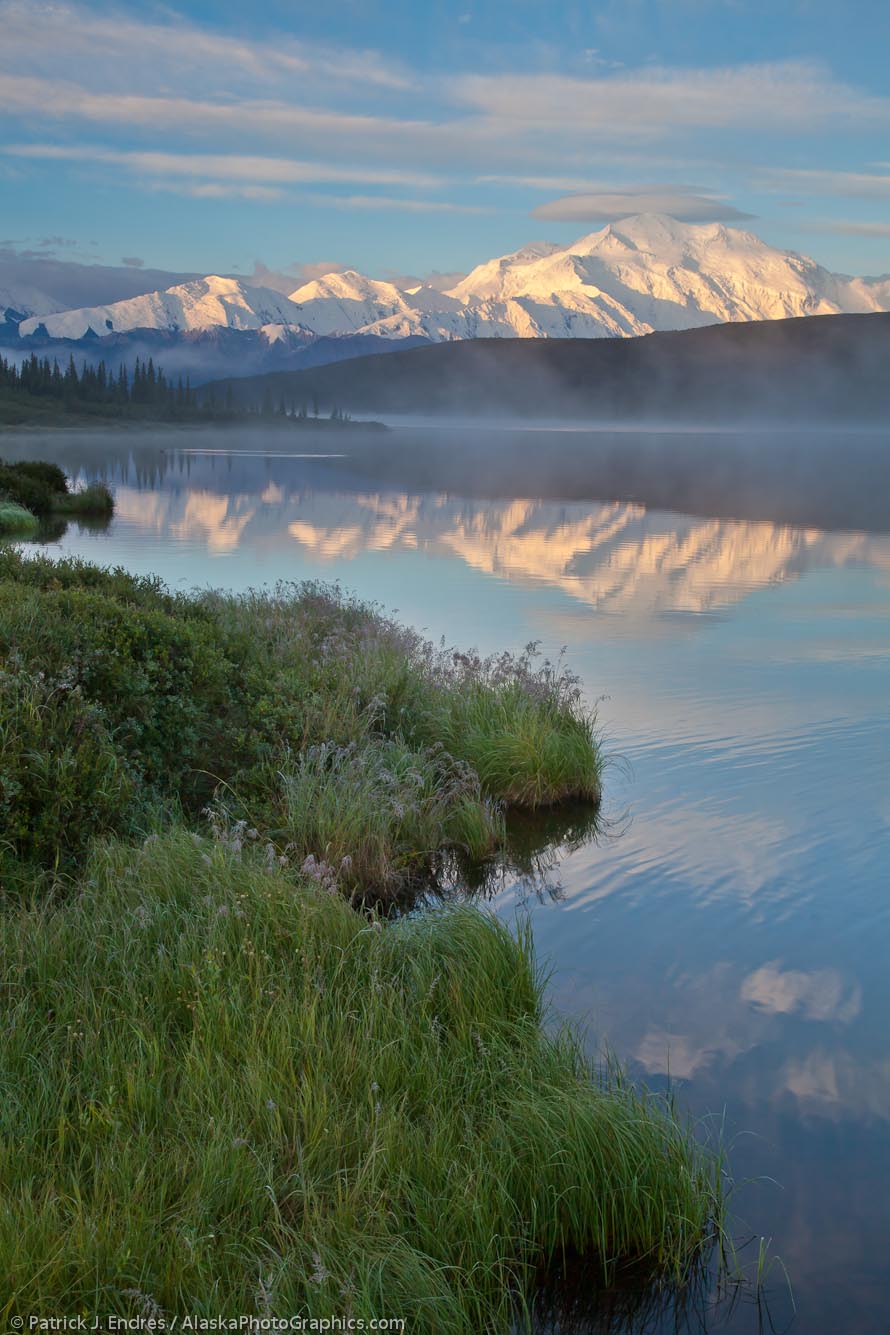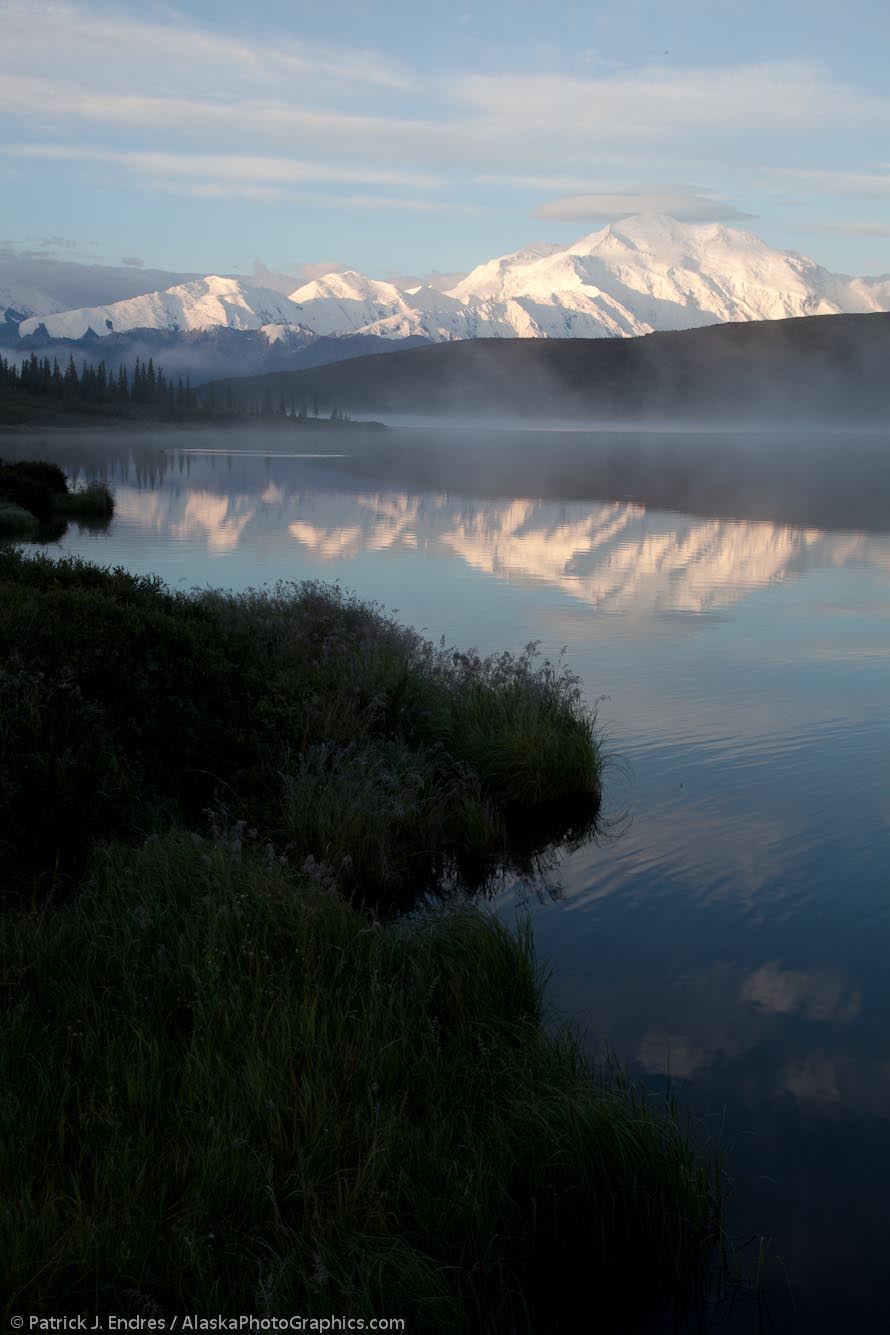
Denali reflecting in Wonder Lake, Denali National Park, Alaska. Canon 5D Mark II, 24-105mm f/4L IS (47mm), 1/8 sec @ f/16, ISO 100. Processed in Lightroom 3 with brush brightness increase on the foreground and brush brightness decrease on the mountain and sky to balance tonality. Fill light set at a risky 54, but the shadows still hold up well. I shot multiple exposures in case HDR or blending was necessary but it looks as though a single image looks great. Using a low ISO is important. See the image below to compare with the original RAW capture.
On Sunday, July 25, my eyes slowly opened at 4:00 AM. The temperature read 33 degrees. If you have spent any time in the outdoors in Alaska, such a chilly temperature in July is a telltale sign that the skies above are clear. I checked the sky (the first thing every landscape photographer does upon waking) to confirm this. Within 5 minutes after waking, I was in motion.
The night before I gambled and chose to camp at the western end of Denali National Park, in hopes of some sunrise light on Denali. Record high rainfall has fallen in Alaska’s interior during the month of July so I felt gifted by the clear morning. But more specifically, I was anxious to see if the clearness overhead extended to that great massif rock called Mt. McKinley, or Denali, North America’s tallest mountain.
I have stood and looked at this mountain on countless mornings and evenings. While the mountain itself never changes, the light and clouds seem in perpetual transition and the visual variation still amazes me. The first thought and desire is to be at twenty different locations when skies are like this, but one has to commit for first light and I chose to stay at Wonder Lake, since the fog and mist over the water was intriguing. Sometimes, the alpenglow color is dramatic, but on this morn, although beautiful, it was not particularly colorful.
Three cameras were set up on tripods and I ran back and forth between them clicking shutters. I used the 16-35, 24-105 and 70-200 lenses on full frame cameras, with ISO set low, and importantly remembered to turn off the Image Stabilization. This is a critical factor when using slow shutter speeds since one can introduce blur when stabilization is turned on for exposures below 1/15 sec or so.
I shook some ice off my tripod legs and mused at the speed in which season’s move in this state.

Original RAW capture, exposed for the mountain highlights. Canon 5D Mark II, 24-105mm f/4L IS (47mm), 1/8 sec @ f/16, ISO 100.






